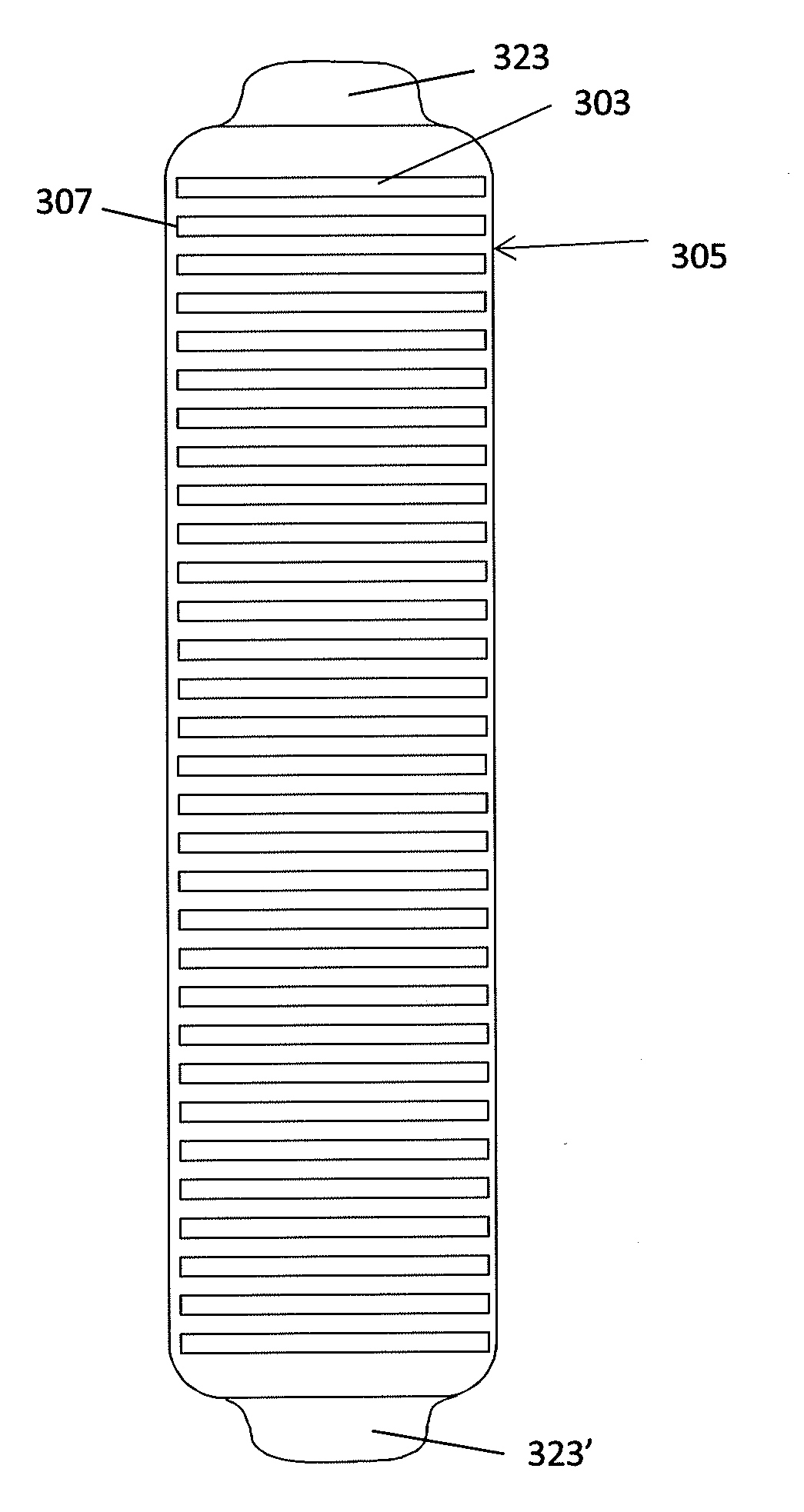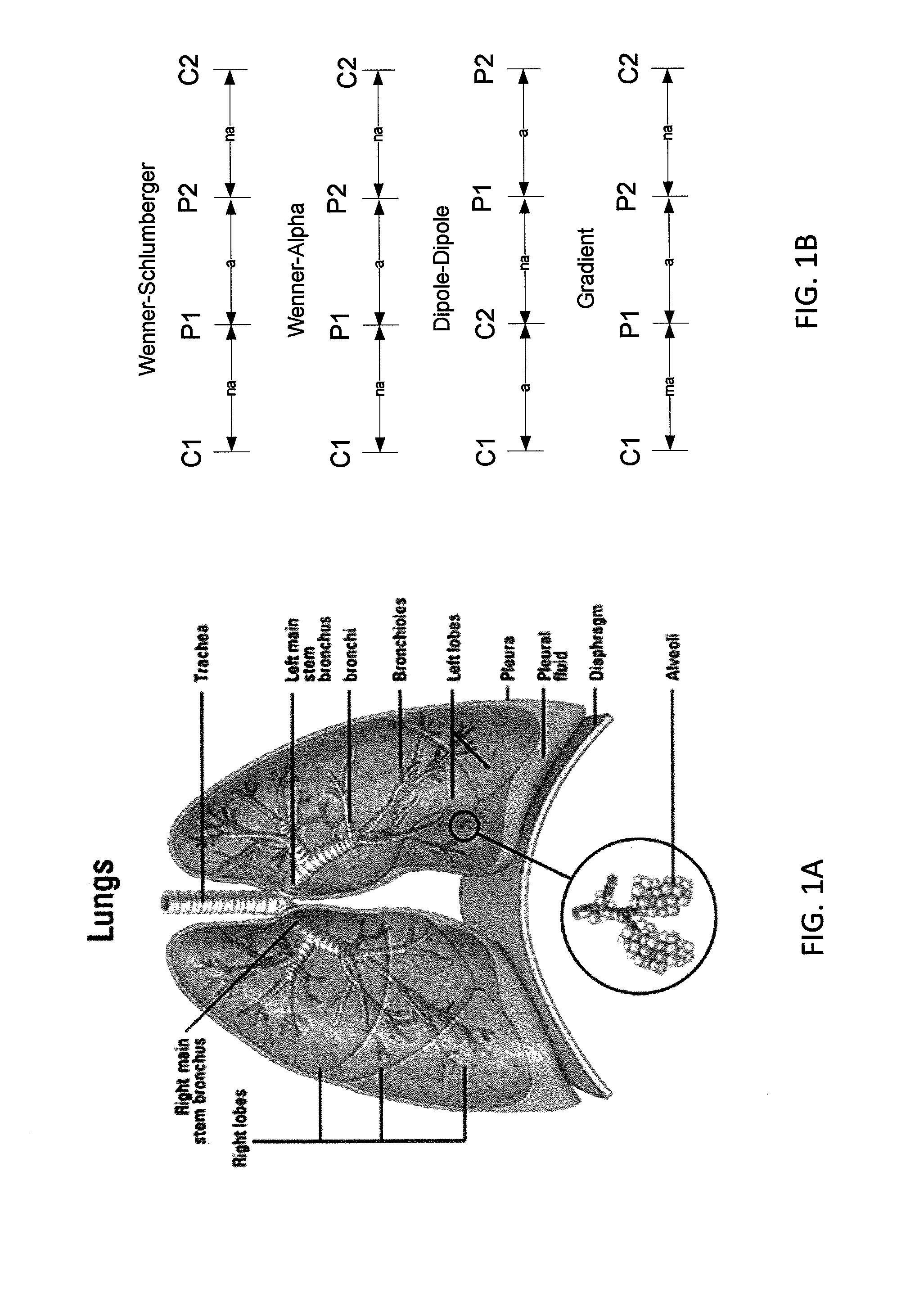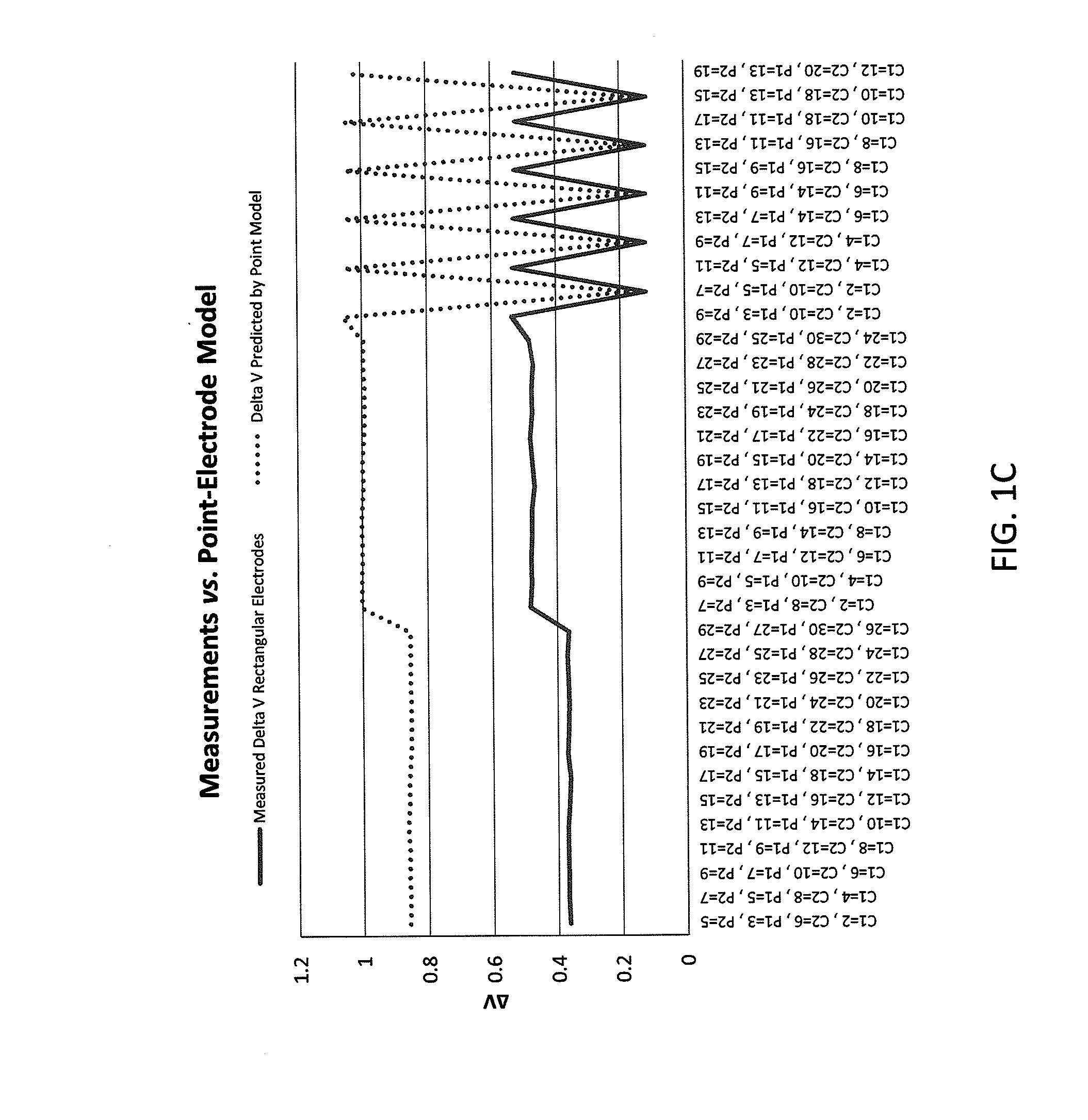Devices for determining the relative spatial change in subsurface resistivities across frequencies in tissue
a subsurface resistivities and tissue technology, applied in the field of tissue subsurface resistivities relative spatial changes, can solve the problems of affecting brain function, muscle aches and pains, dehydration reducing cognitive and physical work capabilities, etc., and achieve accurate and reliable interpretation of rscsraf, accurate diagnosis, monitoring, treating, etc.
- Summary
- Abstract
- Description
- Claims
- Application Information
AI Technical Summary
Benefits of technology
Problems solved by technology
Method used
Image
Examples
Embodiment Construction
[0143]The devices, systems and methods described herein allow non-invasive determination of one or more measures of soft tissue hydration which is largely indifferent to body habitus (e.g. skeletal and thoracic geometry across subjects). These methods, systems and devices utilizing the relative spatial change in subsurface resistivities across frequencies (RSCSRAF). The RSCSRAF may be taken within a subject to cancel out insulating boundary conditions presented by the outer shape of the subject's torso. Several metrics of soft tissue hydration may be determined from the RSCSRAF.
[0144]To provide a measure of soft tissue hydration across subjects of varying body habitus (e.g., skeletal and thoracic geometry), these systems, devices and methods compensate for the effects of varying anatomical geometry on the electrical apparent resistivity measurements. The outer shape of a subject's torso and non-conductive tissue typically presents an insulating boundary condition. Tissue structures ...
PUM
 Login to View More
Login to View More Abstract
Description
Claims
Application Information
 Login to View More
Login to View More - R&D
- Intellectual Property
- Life Sciences
- Materials
- Tech Scout
- Unparalleled Data Quality
- Higher Quality Content
- 60% Fewer Hallucinations
Browse by: Latest US Patents, China's latest patents, Technical Efficacy Thesaurus, Application Domain, Technology Topic, Popular Technical Reports.
© 2025 PatSnap. All rights reserved.Legal|Privacy policy|Modern Slavery Act Transparency Statement|Sitemap|About US| Contact US: help@patsnap.com



